Review
Recumbent Bike: The Complete Beginner’s Guide
In the fast-paced world of fitness and health, the demand for innovative and effective exercise equipment is ever-growing. One such marvel that has been gaining traction is the recumbent bike. As we delve into the intricacies of What Is a Recumbent Bike?, HOOKBIKE aims not only to provide insightful information but to surpass existing resources and establish this article as your ultimate guide.
What is a Recumbent bike?
A recumbent bike is a type of stationary exercise bike designed with a reclined seating position. Unlike traditional upright exercise bikes, recumbent bikes feature a larger, more comfortable seat with a backrest and pedals positioned in front of the rider, rather than beneath them. The design of recumbent bikes is intended to provide a more ergonomic and supportive workout experience.
Recumbent bikes are commonly found in gyms, fitness centers, and home exercise spaces. They are suitable for people of various fitness levels and can be an excellent option for those seeking a low-impact, comfortable workout.
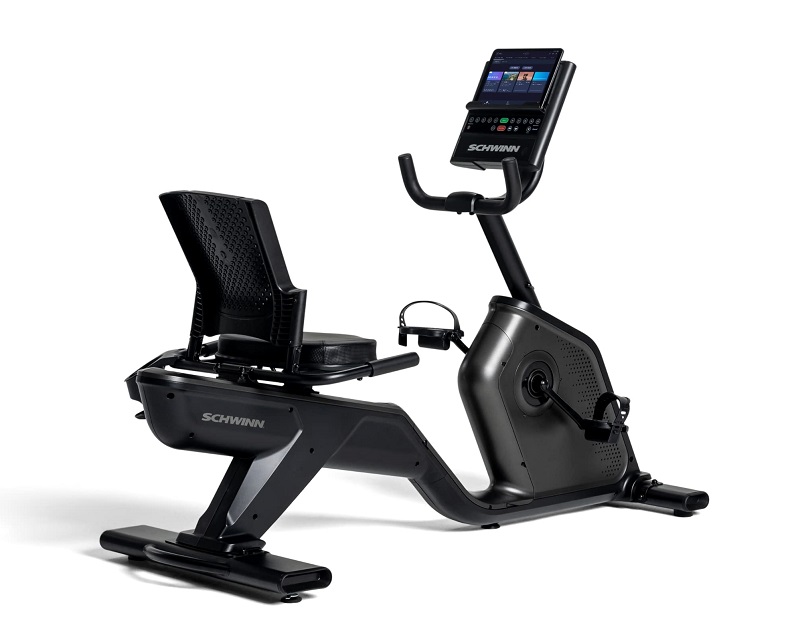
Key Features That Define Recumbent Bikes
Recumbent bikes have several key features that distinguish them from other types of exercise bikes. Here are the key characteristics that define recumbent bikes:
Reclined Seating Position
The most distinctive feature of recumbent bikes is the reclined seating position. Riders sit in a comfortable, chair-like seat with a backrest, rather than an upright saddle.
Pedals Positioned in Front
Unlike traditional upright bikes where the pedals are directly beneath the rider, recumbent bikes have pedals positioned in front of the seat. This design allows users to pedal with their legs extended forward.
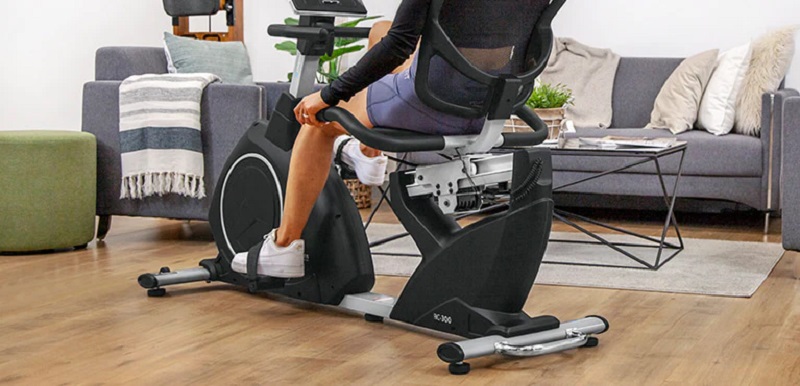
Large and Comfortable Seat
Recumbent bikes typically have a larger and more cushioned seat compared to upright bikes. The design aims to provide a comfortable and supportive seating experience during longer workout sessions.
Back Support
The inclusion of a backrest supports the lower back and promotes a more ergonomic posture during exercise. This feature is especially beneficial for individuals with back issues.
Handlebars by the Side
Recumbent bikes often have handlebars located by the sides of the seat rather than in front. These side handlebars are designed to provide support and stability while allowing the user to maintain a relaxed grip.
Adjustable Resistance
Recumbent bikes come equipped with adjustable resistance settings, allowing users to tailor the intensity of their workouts to their fitness levels. Resistance can be adjusted manually or through pre-programmed workout settings.
Low-Impact Design
The recumbent position reduces the impact on joints, making it a suitable choice for individuals with joint problems or those recovering from injuries. The low-impact nature of recumbent biking is gentler on the knees and lower back.
LCD Display and Workout Programs
Many recumbent bikes feature a digital LCD display that shows workout metrics such as time, distance, speed, and calories burned. Some models also come with pre-programmed workout routines to add variety to your exercise regimen.
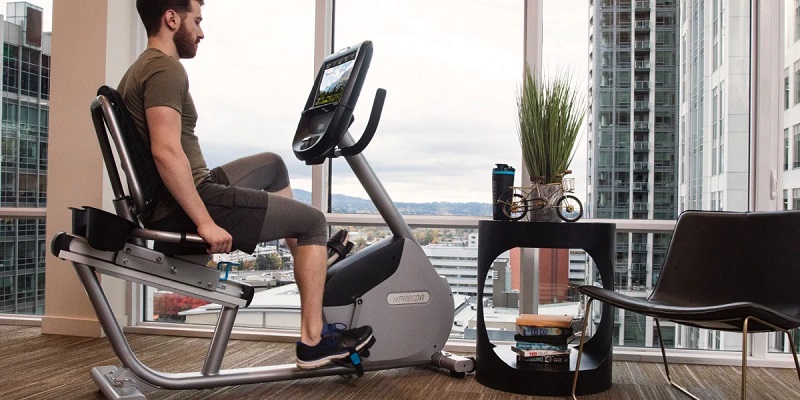
Stability
Recumbent bikes typically have a stable and sturdy design, providing a secure platform for exercising. This can be particularly reassuring for users who may have concerns about balance or stability.
These key features collectively contribute to the comfort, accessibility, and effectiveness of recumbent bikes as exercise equipment. Whether used in fitness centers or as part of home exercise routines, recumbent bikes offer a unique and user-friendly alternative to traditional upright bikes.
Decoding the Benefits of Recumbent Biking
Recumbent biking offers a variety of benefits, making it a popular choice for individuals seeking a comfortable and effective form of exercise. Here are some of the key advantages:
Comfortable Seating Position
The reclined seating position and large, cushioned seat of recumbent bikes provide a comfortable and supportive experience. This can be particularly appealing to individuals with back pain or discomfort.
Low-Impact Exercise
The design of recumbent bikes is gentle on the joints, especially the knees and lower back. This makes them an excellent choice for individuals with joint issues or those recovering from injuries, as the low-impact nature reduces the risk of strain.
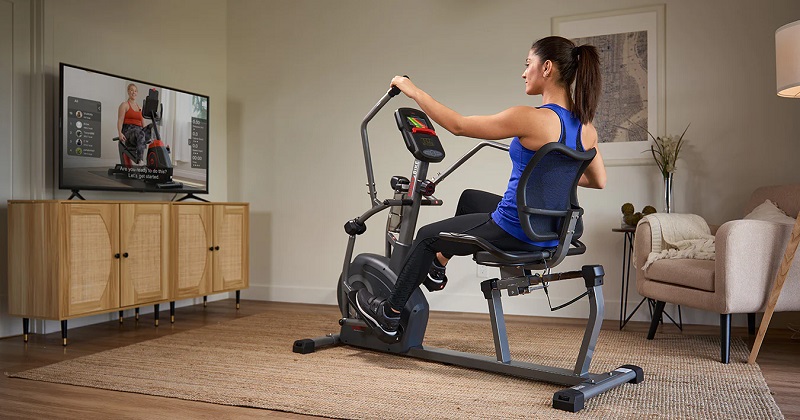
Reduced Strain on Lower Back
The backrest on recumbent bikes helps support the lower back, which can be beneficial for individuals with lumbar spine concerns. The ergonomic design minimizes stress on the back during workouts.
Cardiovascular Health
Recumbent biking provides an effective cardiovascular workout by engaging the muscles in the legs and increasing heart rate. Regular cardiovascular exercise contributes to improved heart health and overall fitness.
Accessibility
The design of recumbent bikes makes them accessible to a wide range of individuals, including those who may find traditional upright bikes uncomfortable or challenging. This inclusivity allows people of different fitness levels and physical conditions to engage in regular exercise.
Safety and Stability
The lower seating position and stable design of recumbent bikes enhance safety and stability during workouts. This can be reassuring for users who are concerned about balance or have mobility issues.
Versatility
Recumbent bikes often come with adjustable resistance levels, allowing users to customize the intensity of their workouts. Some models also offer pre-programmed workout routines, adding variety to exercise sessions.
Multi-Tasking Possibilities
The comfortable seating position of recumbent bikes makes it easier for users to engage in other activities, such as reading, watching TV, or using electronic devices, while exercising. This can make the workout experience more enjoyable and sustainable.
Gradual Progression
Recumbent bikes are suitable for both beginners and experienced exercisers. The adjustable resistance allows for gradual progression, making it easy for users to increase the intensity of their workouts as they build strength and endurance.
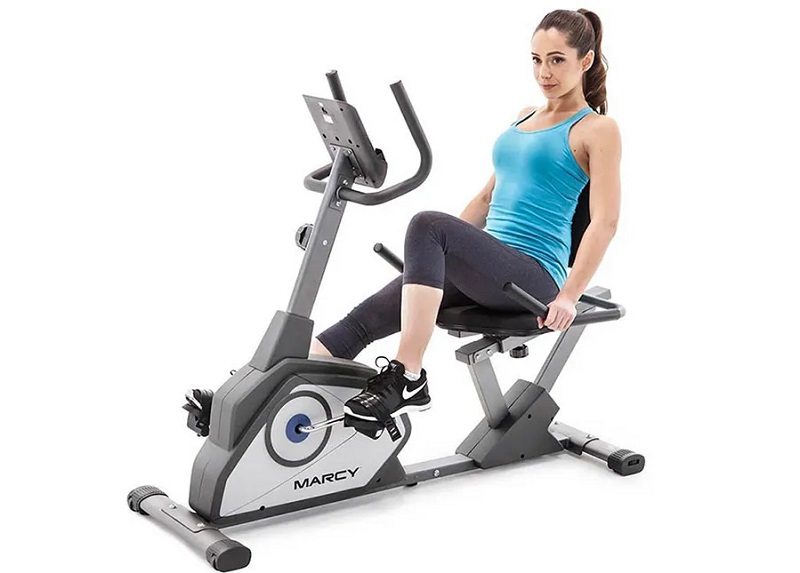
Weight Distribution
The design of recumbent bikes helps distribute body weight more evenly, reducing pressure on specific points of the body. This can contribute to a more comfortable and balanced exercise experience.
Recumbent biking offers a range of benefits, including comfort, low-impact exercise, cardiovascular health, accessibility, safety, and versatility. These advantages make it a popular choice for individuals looking for an effective and enjoyable way to stay active.
Choosing the Right Recumbent Bike for You
Choosing the right recumbent bike involves considering several factors to ensure it meets your specific needs and preferences. Here are some key considerations to help you make an informed decision:
- Comfort: Look for a recumbent bike with a comfortable and adjustable seat. The seat should provide proper support, and the ability to adjust the seat position ensures that it accommodates users of various heights.
- Adjustability: Consider the adjustability of the bike in terms of resistance levels. A good recumbent bike should offer a range of resistance settings to accommodate users at different fitness levels and allow for progression as your fitness improves.
- Programs and Features: Some recumbent bikes come with built-in workout programs, resistance presets, and digital displays. These features can add variety to your workouts and help you track your progress. Look for a model with a clear and easy-to-read display.
- Stability and Build Quality: Ensure that the recumbent bike is stable and well-built. A sturdy frame is essential for safety during workouts. Check user reviews and ratings to get an idea of the bike’s durability and overall quality.
- Size and Space: Consider the size of the recumbent bike, especially if you have limited space in your home. Some models are more compact and have wheels for easy movement, making them suitable for smaller living spaces.
- Ease of Entry and Exit: Pay attention to how easy it is to get on and off the bike. Recumbent bikes typically have a step-through design, which makes them more accessible, especially for individuals with mobility concerns.
- Resistance Mechanism: Recumbent bikes can have different resistance mechanisms, such as magnetic resistance or air resistance. Magnetic resistance is often preferred for its quiet operation and smooth transitions between resistance levels.
- Budget: Determine your budget before shopping for a recumbent bike. Prices can vary widely, so having a budget in mind will help you narrow down your options. Keep in mind that investing in a quality recumbent bike can be a long-term investment in your health and fitness.
- Warranty and Customer Service: Consider the warranty offered by the manufacturer and the reputation of their customer service. A good warranty provides peace of mind, and reliable customer service can be valuable in case you encounter any issues with the bike.
Before making a final decision, it’s often helpful to try out different models in person, either in a store or at a gym. Reading customer reviews and seeking recommendations from friends or fitness professionals can also provide valuable insights. Ultimately, choosing the right recumbent bike involves finding a balance between your specific needs, preferences, and budget.
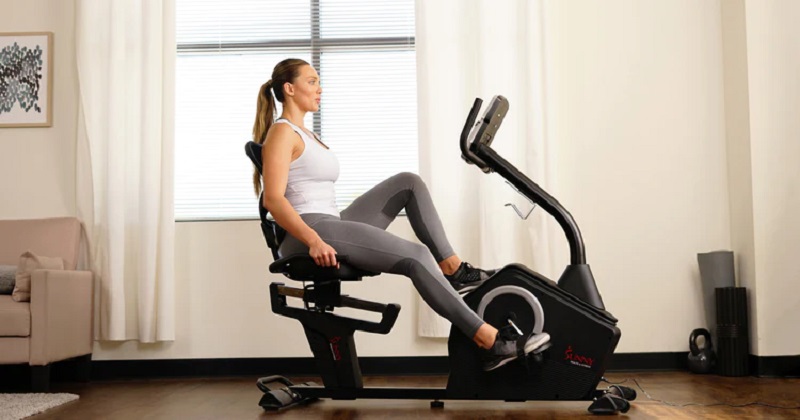
Maintenance Tips for Longevity
Ensuring the longevity of your recumbent bike involves simple yet essential maintenance practices:
- Regular Cleaning: Wipe down the frame, seat, and pedals to prevent the buildup of dust and sweat.
- Check and Tighten Screws: Periodically inspect all screws and bolts to ensure the bike’s stability during use.
- Lubricate Moving Parts: Keep the moving parts, especially the pedals and resistance mechanisms, well-lubricated for smooth operation.

Debunking Common Misconceptions
Myth: Recumbent Bikes Are Only for Seniors
Contrary to popular belief, recumbent bikes are not exclusively designed for seniors. While they do offer a comfortable option for individuals with mobility issues, they are equally beneficial for anyone seeking an effective and enjoyable workout.
Myth: Limited Intensity in Recumbent Workouts
The reclined position might give the impression of a less intense workout, but this is far from the truth. With adjustable resistance levels and strategic pedal placement, recumbent bikes can provide a challenging workout for users of all fitness levels.
Final Thoughts: Embracing the Recumbent Revolution
What Is a Recumbent Bike? – a question that opens the door to a world of fitness innovation. As we navigate the intricate details, it becomes evident that a recumbent bike isn’t just a piece of exercise equipment; it’s a lifestyle choice. Whether you’re a fitness novice or a seasoned enthusiast, incorporating a recumbent bike into your routine can revolutionize the way you approach cardiovascular exercise.
This comprehensive guide has aimed to not only demystify the concept of recumbent bikes but to establish itself as the go-to resource for individuals seeking in-depth knowledge. As you embark on your journey towards fitness and well-being, let What Is a Recumbent Bike? be your guiding light, illuminating the path to a healthier, more active lifestyle.

